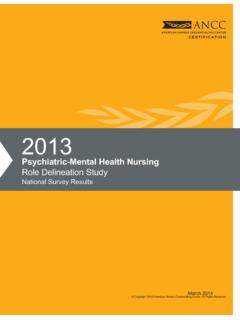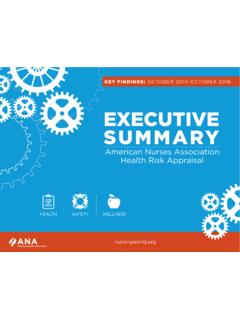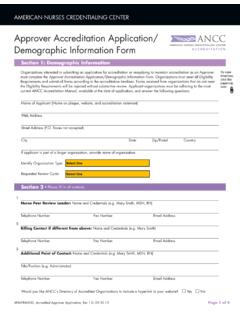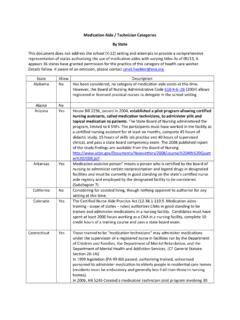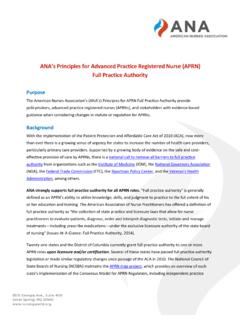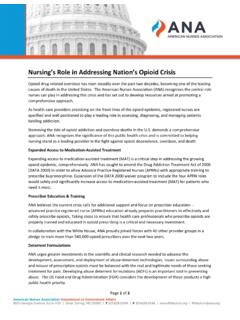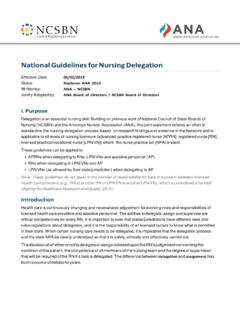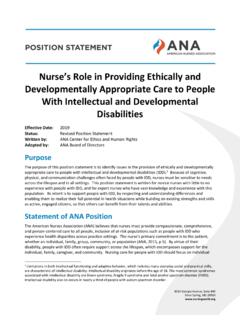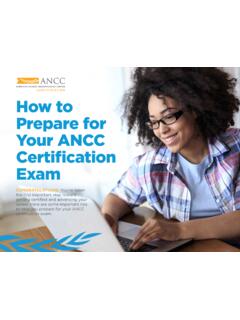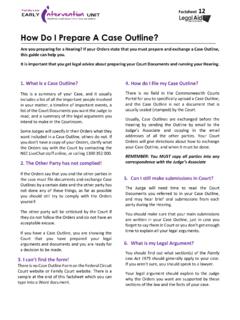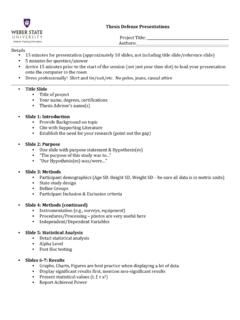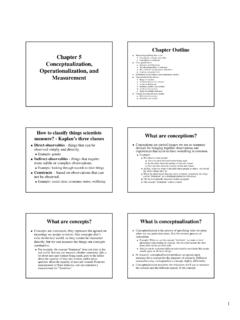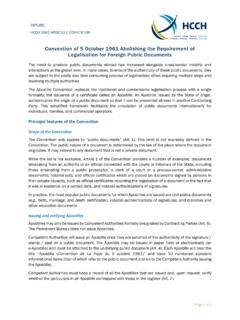Transcription of Test Content Outline - American Nurses Association
1 Test Content Outline Effective Date: May 22, 2019. Family nurse Practitioner Board Certification Examination There are 175 questions on this examination. Of these, 150 are scored questions and 25 are pretest questions that are not scored. Pretest questions are included to determine how well these questions will perform before they are used on the scored portion of the examination. The pretest questions cannot be distinguished from those that will be scored, so it is important for a candidate to answer all questions. A. candidate's score, however, is based solely on the 150 scored questions.
2 Performance on pretest questions does not affect a candidate's score. This Test Content Outline identifies the areas that are included on the examination. The percentage and number of questions in each of the major categories of the scored portion of the examination are also shown. Note: The examples in parentheses are not all inclusive and do not indicate importance. Category Content Domain Number of Questions Percentage I Assessment 31 21%. II Diagnosis 39 26%. III Clinical Management 65 43%. IV Professional Role 15 10%. TOTAL 150 100%. This examination will be developed in consideration of the below secondary classifications, whenever applicable.
3 Body Systems Drug Agents Age Group 1. Cardiovascular 1. Analgesic 1. Infant 2. Endocrine 2. Anti-Infective 2. Preschool 3. Gastrointestinal 3. Cardiovascular 3. School-Age 4. Genitourinary and Renal 4. Endocrine 4. Adolescent 5. Head, Eyes, Ears, Nose, and Throat 5. Eye, Ear, Nose and Skin 5. Young Adult (including late adolescent and emancipated minors). 6. Hematopoietic* 6. Gastrointestinal 6. Adult 7. Immune* 7. Genitourologic 7. Older Adult 8. Integumentary 8. Musculoskeletal 8. Frail Elderly 9. Musculoskeletal 9. Neurological 10. Neurological 10.
4 Psychiatric 11. Psychiatric 11. Reproductive 12. Reproductive 12. Respiratory 13. Respiratory *Less emphasis to be placed on this body system relative to others Page 1. I Assessment A. Knowledge 1. Evidence-based population health promotion and screening B. Skill 1. Comprehensive history and physical assessment 2. Focused history and physical assessment 3. Risk assessment ( , genetic, behavioral, lifestyle). 4. Functional assessment ( , cognitive, developmental, physical capacity). II Diagnosis A. Knowledge 1. Pathogenesis and clinical manifestations of disease states B.
5 Skill 1. Differentiating between normal and abnormal physiologic or psychiatric changes 2. Diagnostic test selection and evaluation III Clinical Management A. Knowledge 1. Pharmacotherapeutics, pharmacokinetics, pharmacodynamics, and pharmacogenetics 2. Anticipatory guidance ( , developmental, behavioral, disease progression, crisis management, end-of-life care). 3. Age-appropriate primary, secondary, and tertiary prevention interventions B. Skill 1. Pharmacotherapeutic intervention selection ( , interactions, contraindications). 2. Pharmacotherapeutic intervention evaluation ( , monitoring, side/adverse effects, patient outcomes).
6 3. Non-pharmacologic intervention selection and evaluation 4. Therapeutic communication ( , motivational interviewing, shared decision making). 5. Culturally congruent practice 6. Resource management ( , accessibility, coordination, cost effectiveness). Page 2. IV Professional Role A. Knowledge 1. Legal and ethical considerations for health care informatics and technology ( , confidentiality, accessibility). 2. Scope and standards for advanced practice registered Nurses 3. Regulatory guidelines ( , reportable diseases, abuse reporting). 4. Evidence-based clinical guidelines and standards of care 5.
7 Ethical and legal principles and issues for patients, populations, and systems ( , justice, consent, guardianship, bioethics). B. Skill 1. Research appraisal ( , design, results, clinical applicability). Last Updated: August 28, 2018. Page 3.
